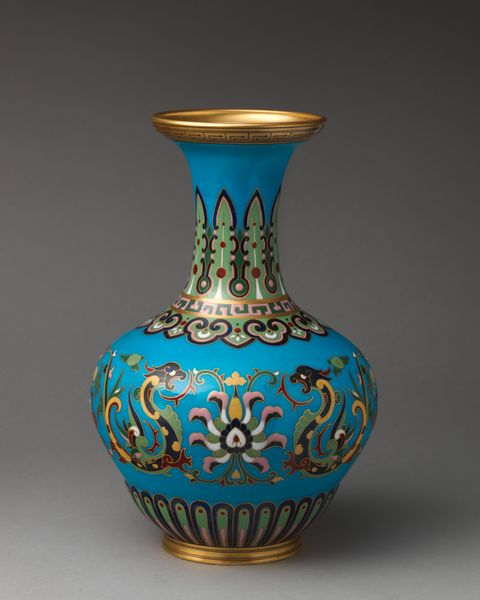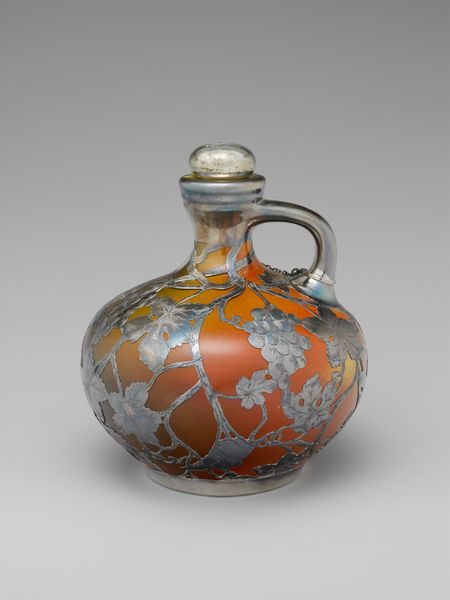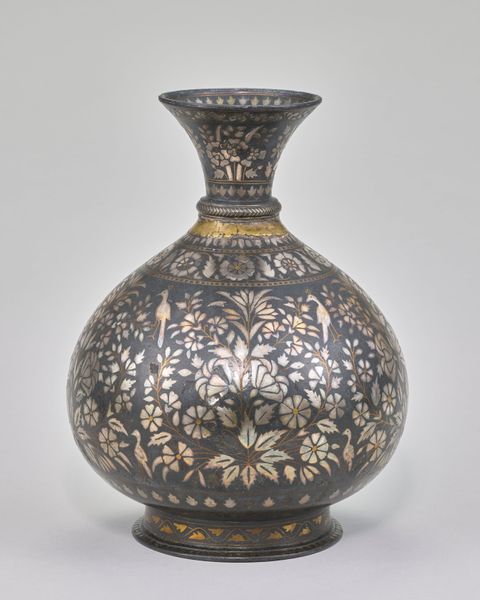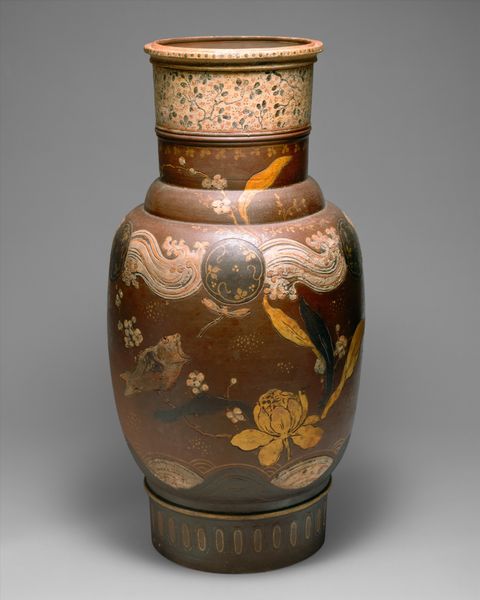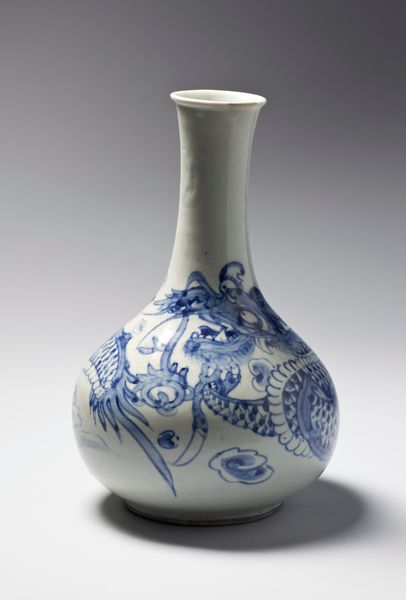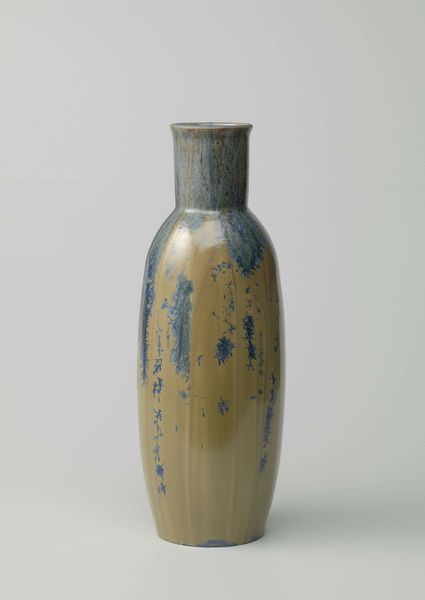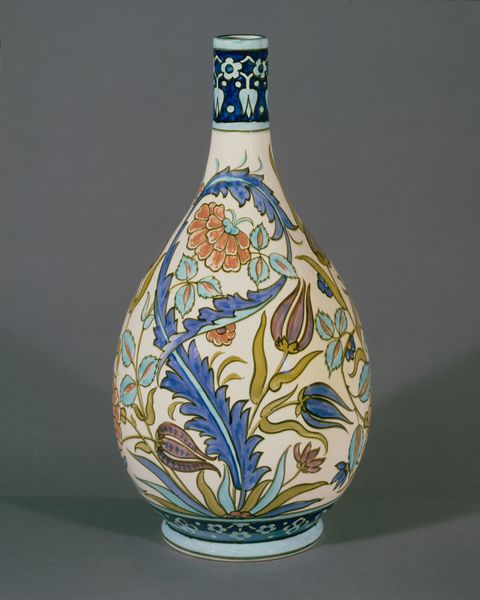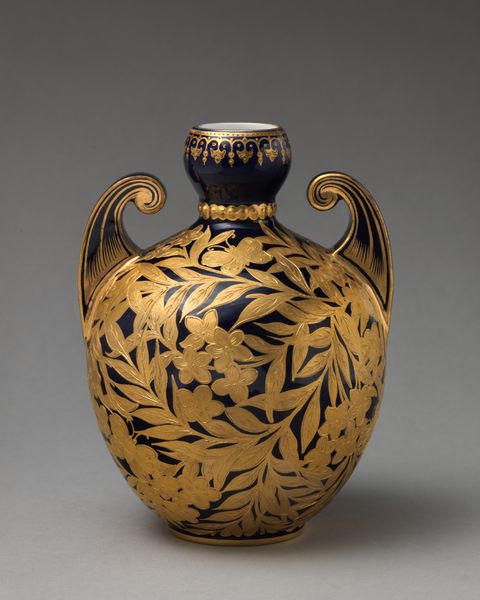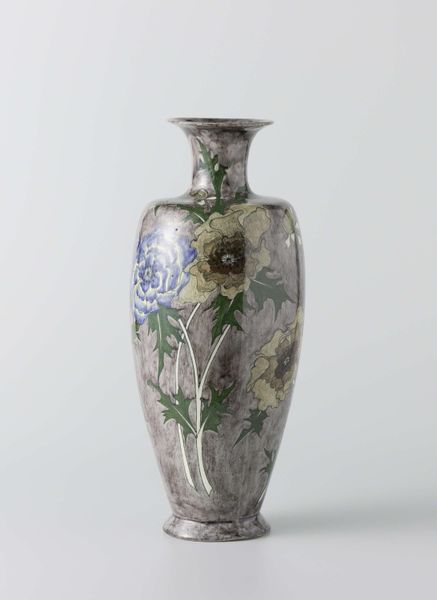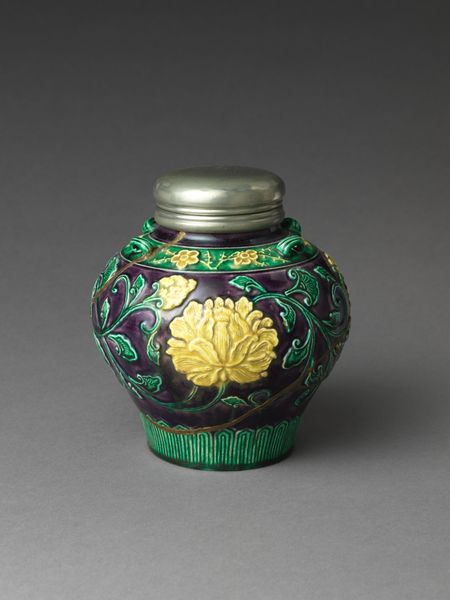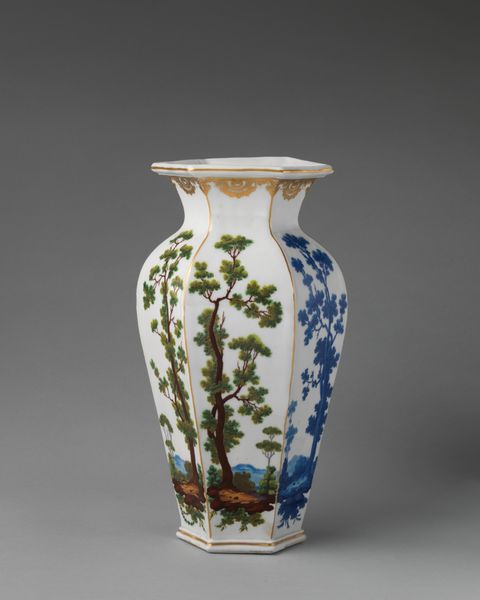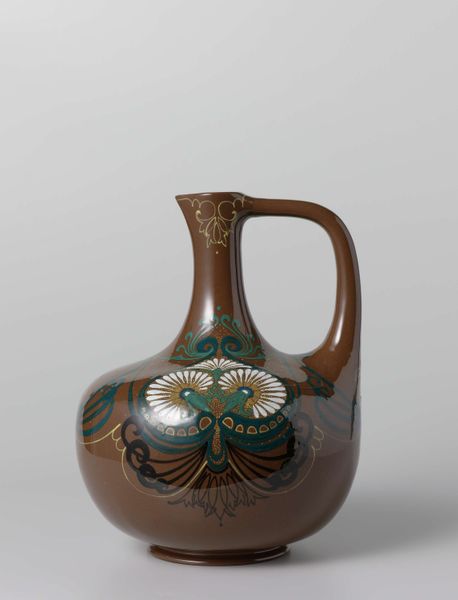
ceramic
#
arts-&-crafts-movement
#
ceramic
#
flower
#
ceramic
#
decorative-art
Dimensions: 11 in. (27.9 cm)
Copyright: Public Domain
Curator: Standing before us is a ceramic vase, made around 1880 by John Bennett. It’s currently held in the collection of the Metropolitan Museum of Art. Editor: It has an understated beauty; the cobalt blue is captivating, offset by the soft florals, and a quiet melancholy hovers around it. Curator: Bennett was a prominent figure in the Arts and Crafts movement, a design and social reform movement that championed handcraftsmanship against industrial production. You can really feel the care that has gone into the form. Editor: Exactly! One way to interpret the Arts and Crafts movement is as a form of resistance. At its heart, it championed those whose work was most likely overlooked or rendered invisible by industrial capitalism. Curator: The glaze is something special too—it seems almost painterly. Bennett’s works often integrated floral and naturalistic motifs, and here, you can observe how the artist masterfully applied a decorative technique that recalls transferware while creating an individual art object. Editor: And those hand-painted chrysanthemums offer a visual feast. The vase subtly incorporates traditionally gendered skills and media while questioning industrial manufacturing’s impact on class and gender hierarchies. It seems to celebrate the supposed “domestic sphere.” Curator: And not just that, the vessel itself could be said to echo this resistance as its practical functionality is heightened by beautiful craftsmanship. In an age of mechanization, these handcrafted items affirmed individuality. Editor: The Arts and Crafts movement, particularly the contribution of ceramic objects, offered some avenues to express identities outside of those readily available in the dominant Victorian culture, for both maker and user. This vase could be a powerful symbol, especially considering what women historically have been denied in patriarchal societies. Curator: It is clear Bennett was invested in elevating decorative arts to a status on par with painting and sculpture. He emphasized process. Editor: It's hard not to see this as inherently political, even subversive, in its embrace of craft and labor within a culture defined by production! Curator: Bennett has left behind more than just decorative works but an artistic intervention for the place of hand-crafted items and the people who make them. Editor: Precisely. This simple object encapsulates a range of complicated cultural anxieties about labor, gender, and aesthetics during rapid industrialisation.
Comments
No comments
Be the first to comment and join the conversation on the ultimate creative platform.

